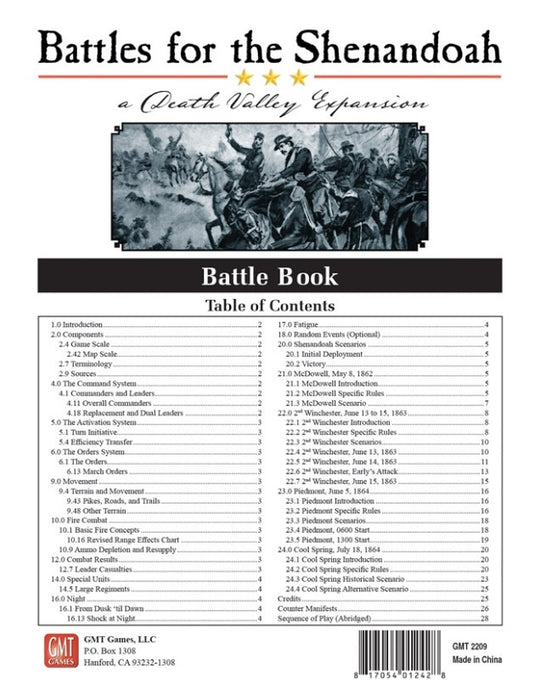Battles of the Shenandoah expansion
Sixty years of tense, uneasy peace are shattered as the Korean Peninsula erupts in renewed warfare. One historically, ethnically, and culturally homogeneous people polarized and separated by superpower politics and economics hurl men, weapons, and material into the maelstrom of modern combat in an attempt to settle their arbitrary division once and for all. From Pyongyang in North Korea to Busan in the South, the war rages. In a scene reminiscent of the first attack by the In Min Gun in 1950, the North Korean Peopleâs Army surges across the Demilitarized Zone and penetrates deep into South Korea. Special Operations Forces from both sides conduct raids, interdiction, and reconnaissance missions behind enemy lines while airborne, air assault, and amphibious forces strike far behind those lines attempting to outflank the main army forces of both sides. In the air, both sides wage a heated campaign in an effort to establish superiority over the skies of Korea. With rough terrain and the full ferocity of modern armor, airmobile, airborne, and marine warfighting capabilities, there is no safe haven in the lethal cauldron of battle which has engulfed the Korean Peninsula. Â While North and South battle for a quick, decisive victory, the world awaits the response of the two military superpowers in the region: the United States of America and the Peopleâs Republic of China. Will the United States, stung by high casualties among the soldiers of its 2nd Infantry Division near the DMZ during the surprise artillery barrages and initial assaults on the first day of the war, be able to reinforce the South quickly enough, and, if so, how and in what strength? Will the Communist Chinese again react (or pre-emptively intervene) to a massive US response and join the fray, thus widening the conflict? As the situation evolves, choices are made, forces are committed, and the security of Japan and the future of the two Koreas hangs in the balance.
Y2

